Over 72% of customers now prefer chatbots for quick query resolution, with AI-powered assistants handling billions of requests annually (IBM). As demand for instant, 24/7 self-service support explodes, enabling seamless chatbot integration across communication channels is no longer optional. By 2023, IDC predicts conversational AI will influence over $1.1 trillion in enterprise IT spending, with chatbots and virtual assistants leading adoption.
Integrating intelligent automation into existing workflows is essential to unlocking the technology’s full potential. BotPenguin allows easy connector configuration to unlock 60+ platform integrations right out of the box. This means instantly merging AI-powered chatbots across websites, messaging apps, internal service desk software, CRM systems, and more to enable omnichannel experiences.
With native integration capabilities, BotPenguin customer queries remain in context across any touchpoint. Bots retain interaction history, access universal user profiles, leverage machine learning, and more to drive hyper-personalization.
Let's learn more about Chatbot integrations for customer support:
What is Chatbot Integrations for Customer Support?
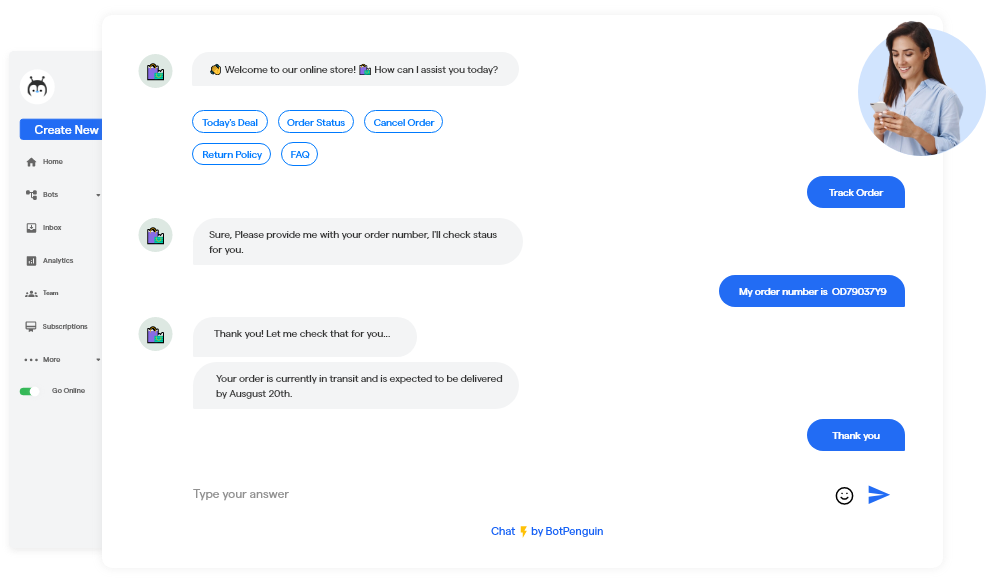
Chatbot integration for customer support refers to the process of connecting chatbots with various platforms and systems, such as messaging apps, websites, and CRMs. These integrations enable chatbots to interact with customers, gather information, and provide automated responses or route queries to human agents when necessary.
How do Chatbot Integrations Work?
Chatbot integrations for customer support rely on application programming interfaces (APIs) to establish connections between the chatbot and the platforms or systems it interacts with. APIs allow chatbots to access data, trigger actions, and send or receive messages in real time. This real-time communication ensures prompt and accurate responses to customer queries.
Chatbot integration for customer support can be categorized into two main types:
- Messaging Platform Integrations: These chatbot integrations for customer support enable chatbots to interact with customers through messaging apps like Facebook Messenger, WhatsApp, or Slack. By integrating with these platforms, chatbots can handle queries, provide information, and perform transactions directly within the messaging app.
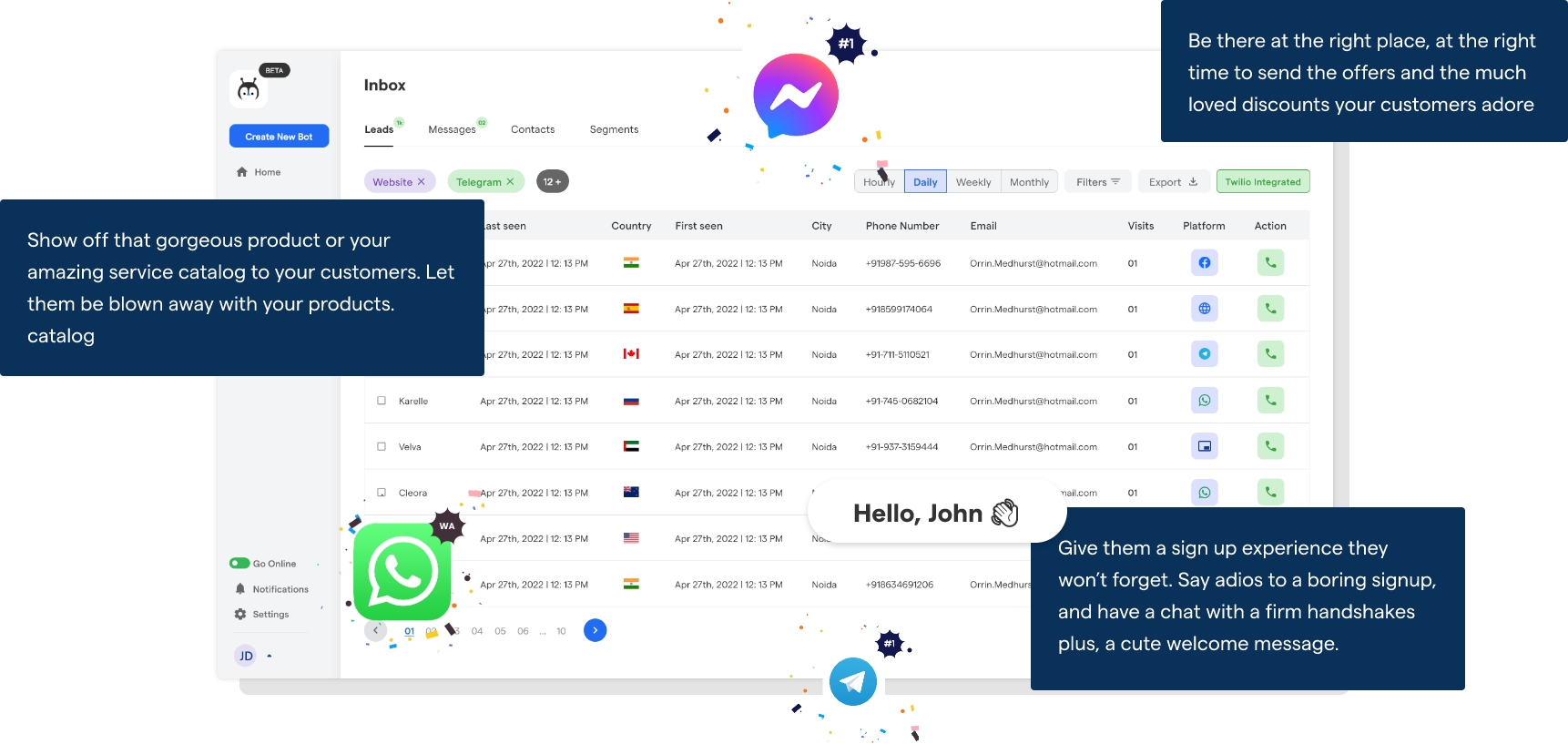
- CRM and Helpdesk Integrations: These Chatbot integrations for customer support connect chatbots with customer relationship management (CRM) systems and helpdesk platforms. By integrating with CRMs like Salesforce or Zendesk, chatbots can access customer data, log interactions, and provide personalized support. Helpdesk integrations allow chatbots to escalate complex queries to human agents and transfer relevant context seamlessly.
Automating Customer Support with BotPenguin's Chatbot Integration
Integrating a chatbot for customer support automation has never been easier. With BotPenguin, you can streamline your support processes and enhance customer experiences. Here's a step-by-step guide on integrating a chatbot using BotPenguin:
Step 1
Sign up for BotPenguin
To get started, sign up for an account on BotPenguin's website. You'll need to provide some basic information to create your account.
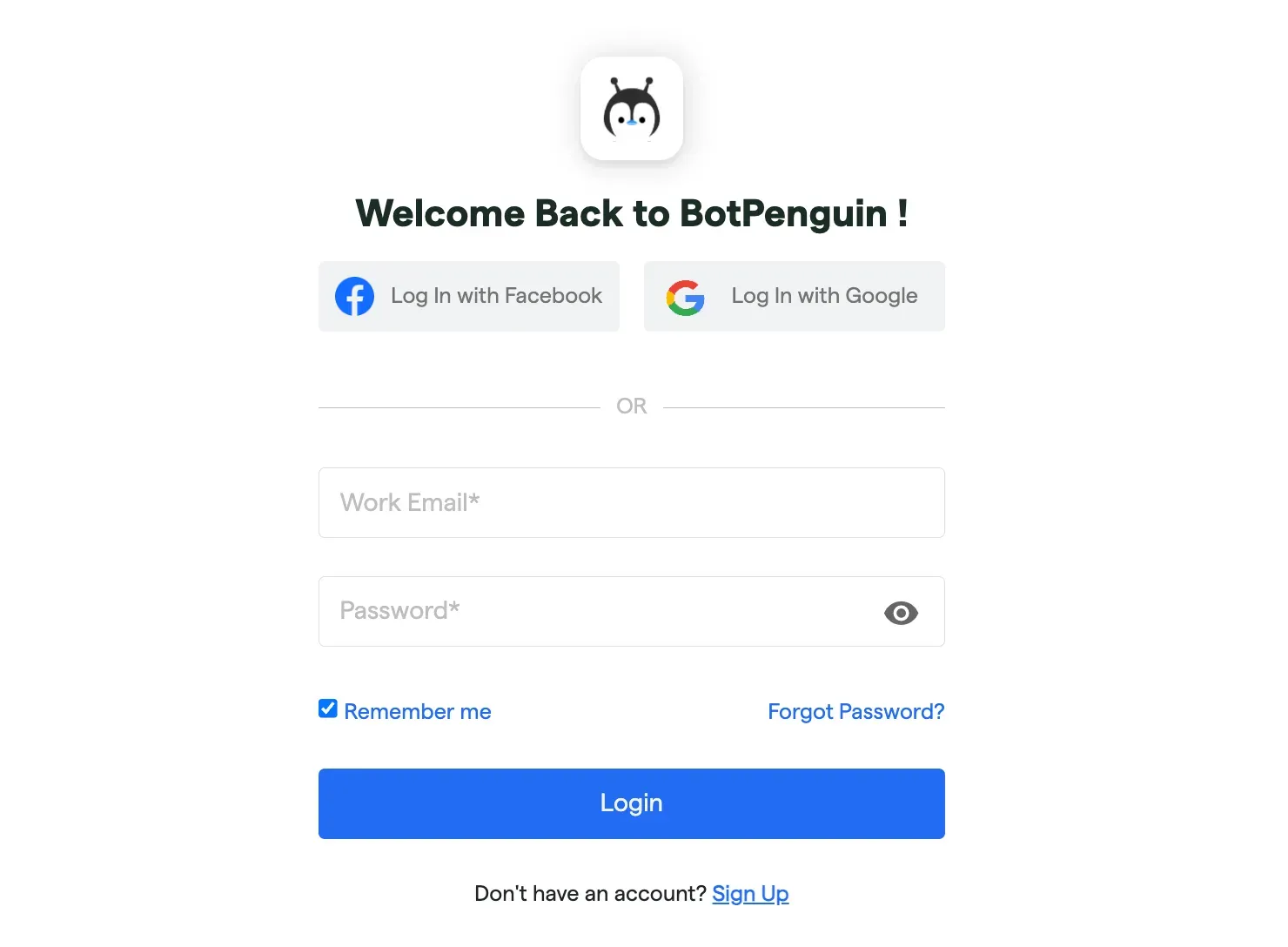
Step 2
Select the Platform
Choose the platform where you want to create your chatbot. Whether it's for your website, landing page, mobile app, WhatsApp, Facebook, or Telegram, BotPenguin supports a wide range of platforms.
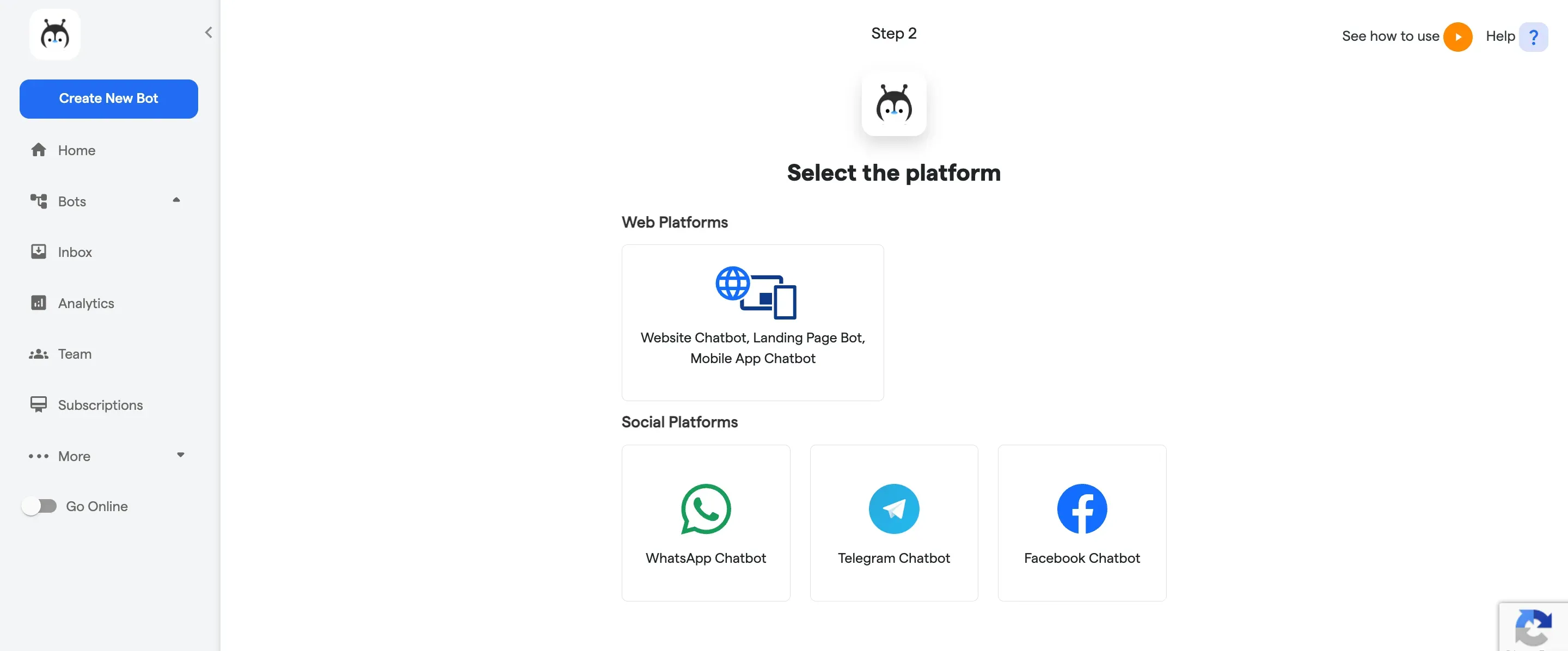
Step 3
Choose your Chatbot Type
Before creating your chatbot, decide on the type you want. You have two options: a rule-based chatbot or an AI chatbot using ChatGPT integration. Select the one that best suits your needs.
Suggested Reading:
Step 4
Customize the Appearance and Give it a Name
Personalize your chatbot's appearance by customizing its color, font, and style to match your brand. Additionally, give your chatbot a name that reflects your brand identity.
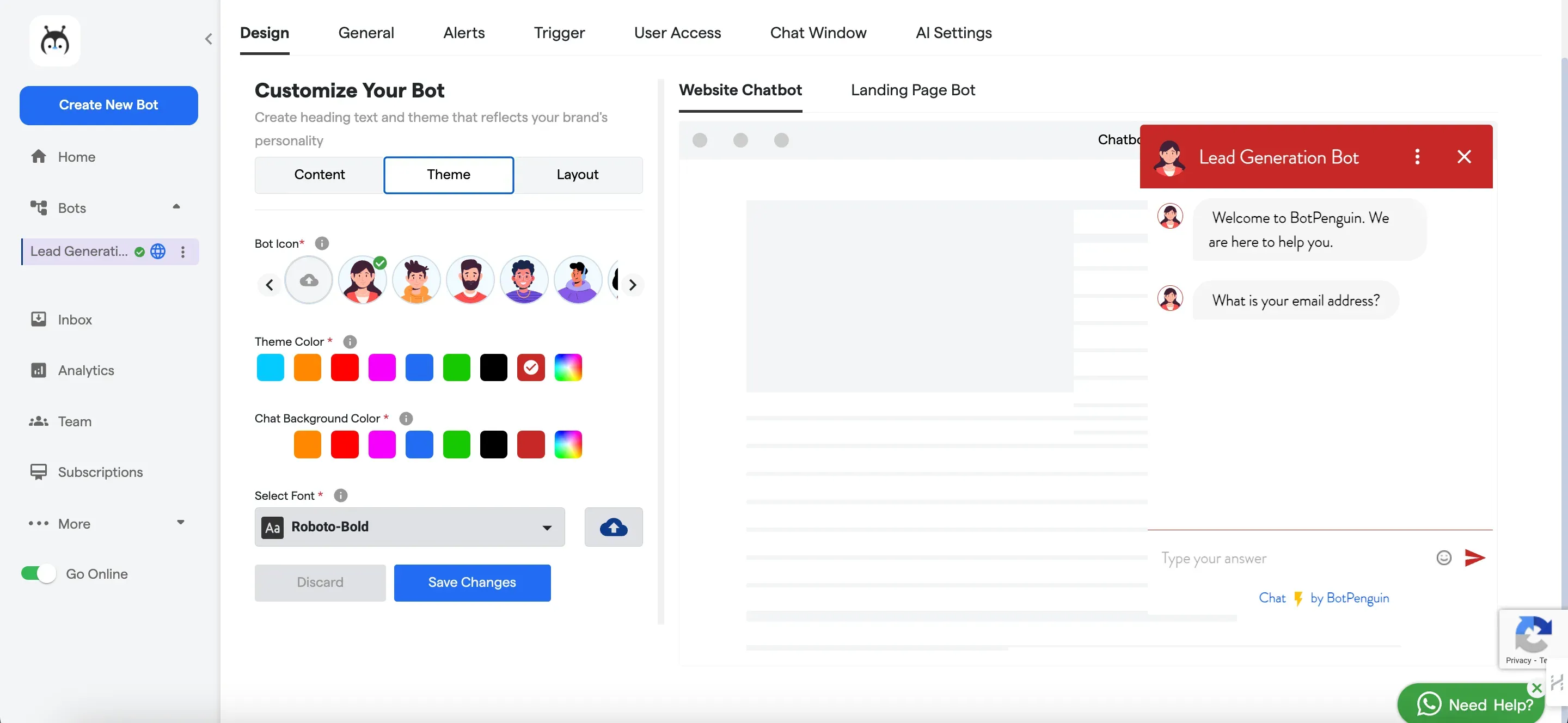
Step 5
Provide your Chatbot with a Database
To enhance your chatbot's knowledge and capabilities, provide it with a database. This ensures your chatbot can access accurate and relevant information to assist your customers effectively.
Step 6
Create a Conversational Flow
Design the conversational flow for your chatbot. This involves mapping out the various interactions and responses your chatbot will have with customers. Ensure the flow is logical and intuitive for a seamless user experience.
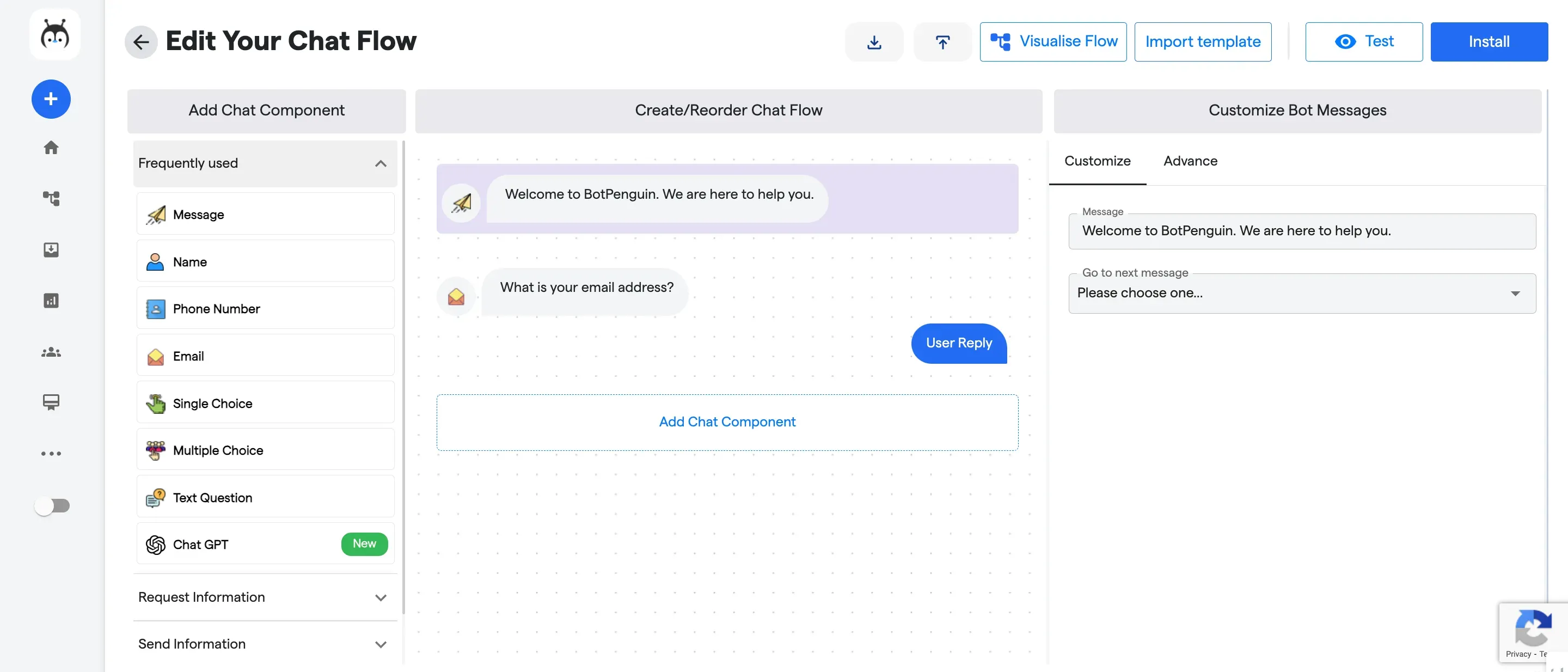
Step 7
Select Native Integrations
Choose from over 60 native integrations BotPenguin offers to further enhance your chatbot's functionality. Select integrations such as automation, CRM, courier tracking, customer support, productivity, scheduling, or task management based on your specific requirements.
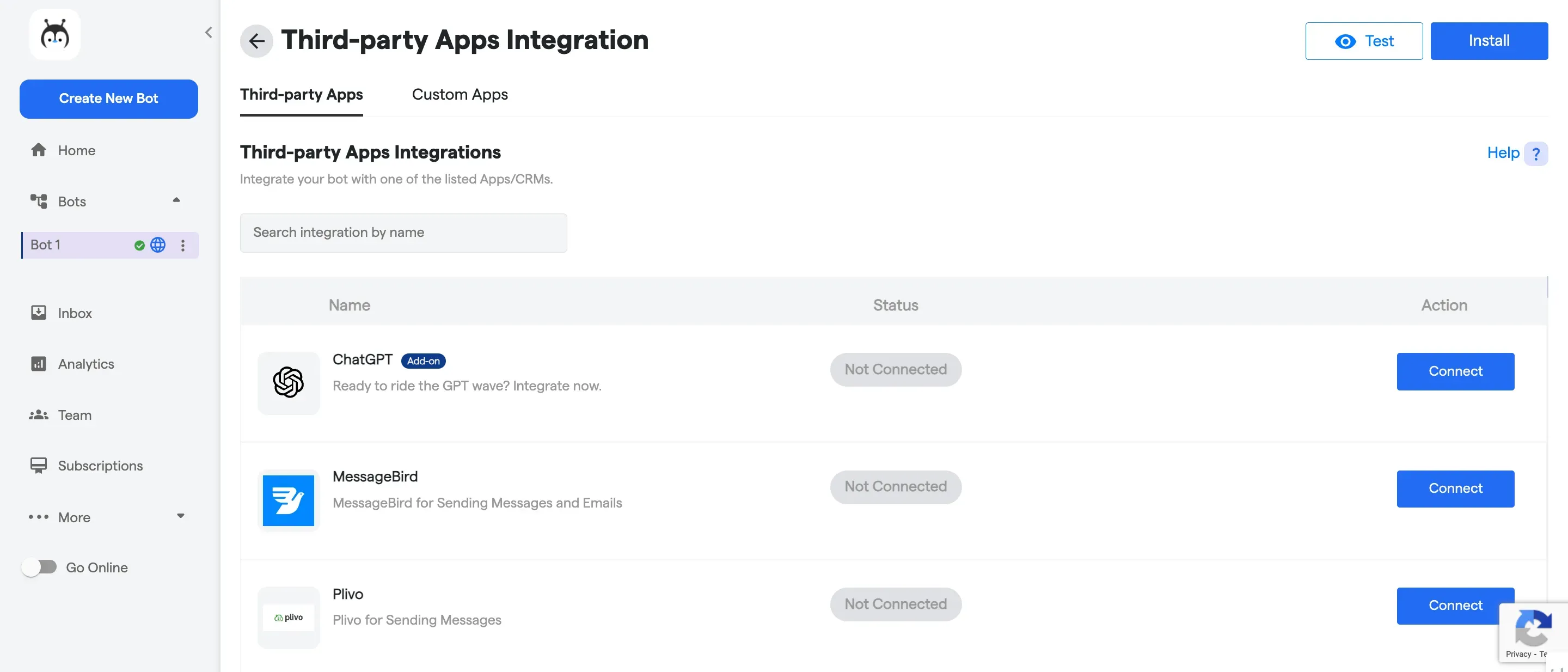
Step 8
Install your Chatbot
Install your chatbot on your desired platform. BotPenguin supports various CMS options like custom, WordPress, WIX, Woocommerce, Shopify, Squarespace, and even embedding the chatbot script onto your website or landing page. You can also integrate your chatbot into a mobile app.
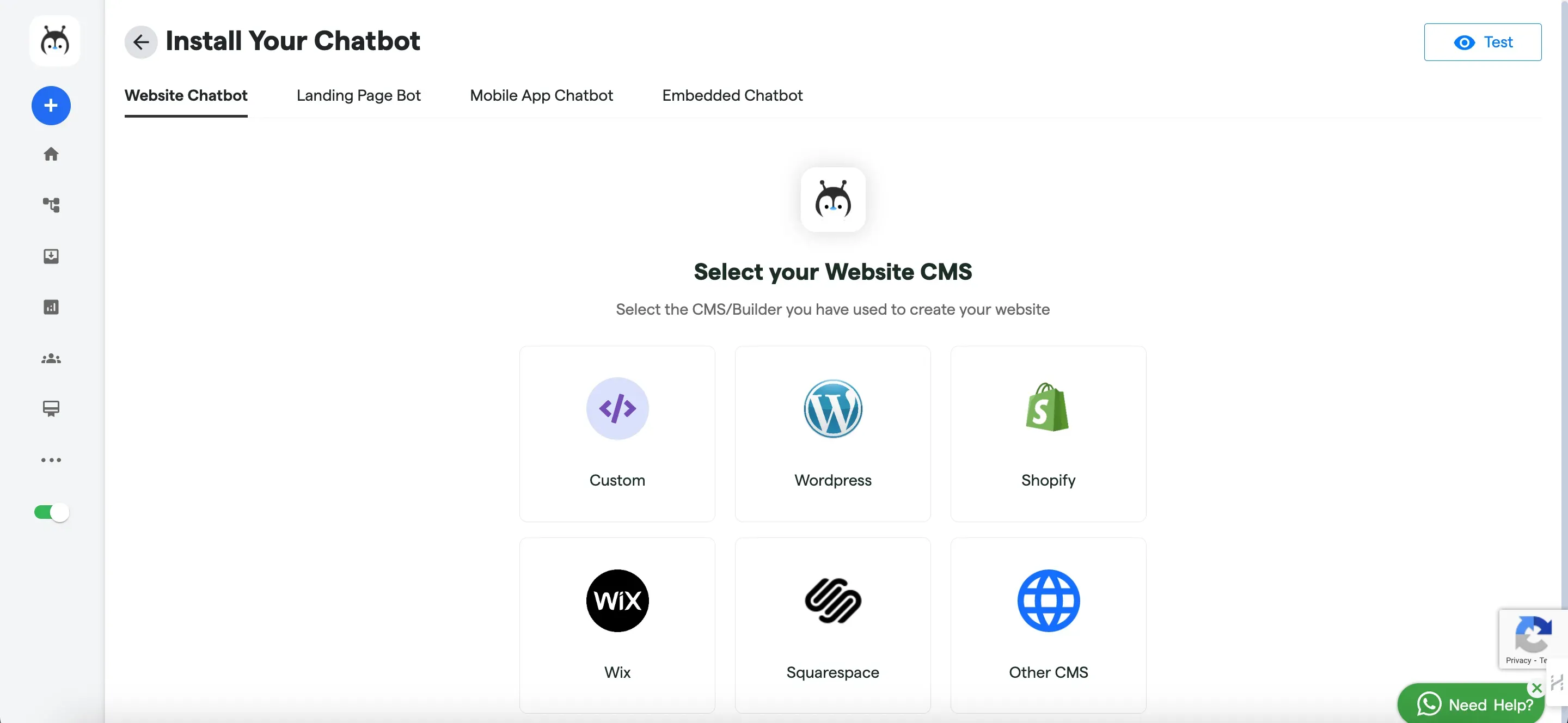
Step 9
Test and Refine your Chatbot
Now that your chatbot is ready, it's essential to test it thoroughly to ensure it functions as expected. Engage with your chatbot and refine its responses, conversational flow, and overall performance based on user feedback and interactions.
Once you've completed these steps, your chatbot is ready to provide automated customer support. It will help streamline your support processes, provide instant assistance, and enhance customer satisfaction. Remember to regularly monitor and update your chatbot to ensure it continues to meet your customers' evolving needs.
What Can You Expect From BotPenguin's Chatbot Integration for Customer Support?
So, you've created a chatbot using BotPenguin's platform, but what more can you get from BotPenguin chatbot integration for customer support? Here's what you can expect:
Reasonable Pricing
BotPenguin provides flexible pricing plans to suit businesses of all sizes. With a free Baby plan that allows up to 2000 messages, a King plan starting from just $5 per month for 3000 messages, and an Emperor plan for more customized needs with unlimited messaging, you can choose a plan that meets your requirements and budget.
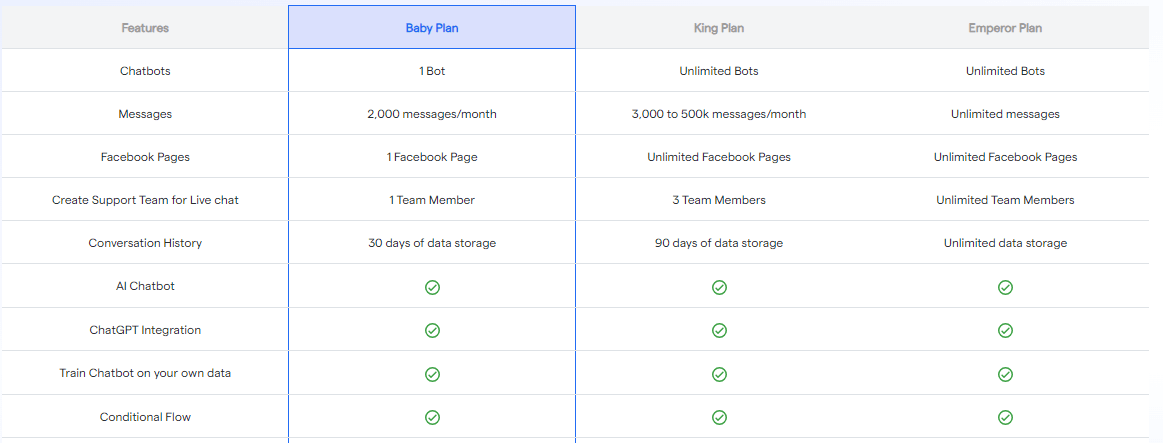
Integration With ChatGPT
BotPenguin integrates seamlessly with OpenAI's ChatGPT, a state-of-the-art language model. This integration allows you to train your chatbot on custom data, empowering it to provide more personalized responses to customer queries. The combination of ChatGPT's capabilities with BotPenguin's integration offers an advanced and intelligent customer support solution.
Easily Train Your Chatbot
With BotPenguin, training your chatbot is a breeze. The platform provides an intuitive interface that lets you easily train the chatbot on custom data. This enables your chatbot to understand specific industry domains, answer frequently asked questions, and deliver accurate information to customers.
Suggested Reading:
How to train a Custom Chatbot on your own data with ChatGPT?
40+ Pre-made Templates
BotPenguin offers a wide range of pre-made chatbot templates. These templates cover various industries and domains, allowing you to quickly set up your chatbot with minimal effort. By leveraging these templates, you can jumpstart your chatbot's deployment and provide instant customer support.
60+ Native Integrations
BotPenguin boasts over 60 native integrations with popular messaging apps, CRMs, helpdesk platforms, and other tools commonly used in customer support. This extensive range of integrations ensures that your chatbot can be seamlessly integrated into various platforms, including WhatsApp, Messenger, Telegram, and more.
Omnichannel Chatbot Integration
With BotPenguin, you can establish an omnichannel presence for your chatbot. This means your chatbot can interact with customers across multiple platforms simultaneously, ensuring a consistent and seamless customer experience. By integrating your chatbot with different channels, you can reach a wider audience and provide support where your customers prefer.
- WhatsApp Chatbot
- Facebook Chatbot
- WordPress Chatbot
- Telegram Chatbot
- Website Chatbot
- Squarespace Chatbot
- woocommerce Chatbot
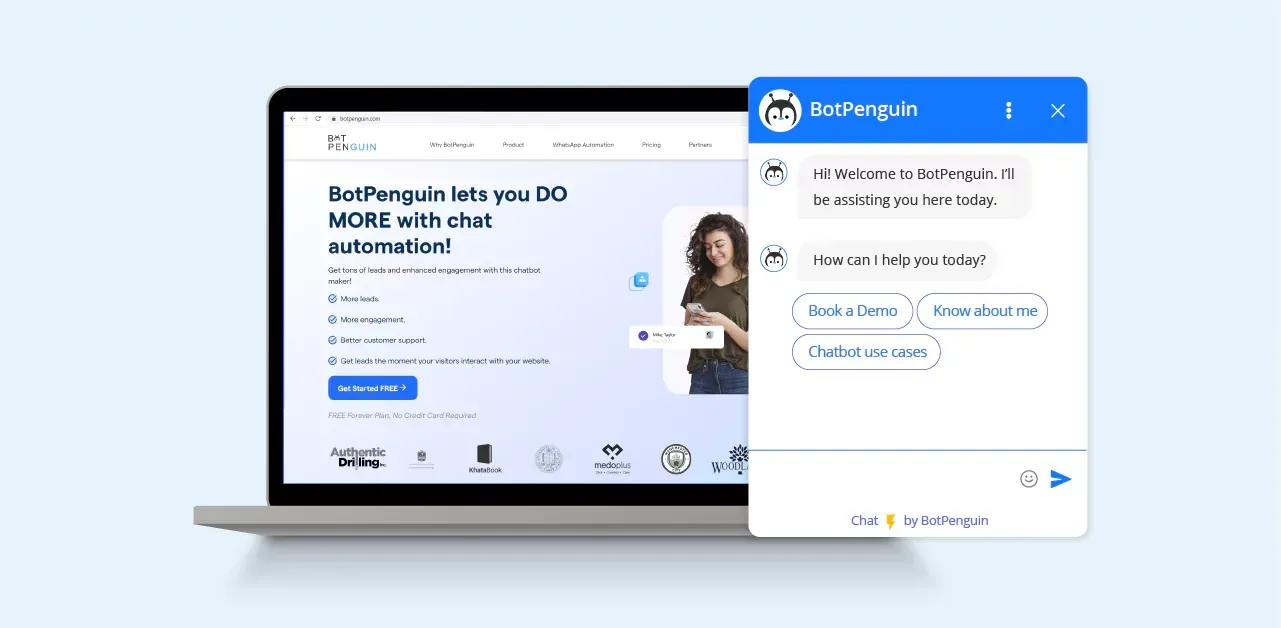
Native Live Chat Feature
BotPenguin also offers a native live chat feature, enabling seamless escalation of complex queries from the chatbot to human agents. This integration allows your support team to seamlessly take over conversations when needed, ensuring a smooth customer support process that combines the power of automation and human assistance.
Unlimited Chatbot Creation
With BotPenguin, there are no limitations on the number of chatbots you can create. Whether you need dedicated chatbots for different departments or multiple chatbots for various products or services, BotPenguin allows you to create and manage as many chatbots as required.
Voice Support with Twilio Integration
Once integrated with Twilio, BotPenguin's chatbot can support voice interactions. This functionality enables customers to interact with the chatbot using voice commands, expanding the accessibility and convenience of your customer support.
Analytics
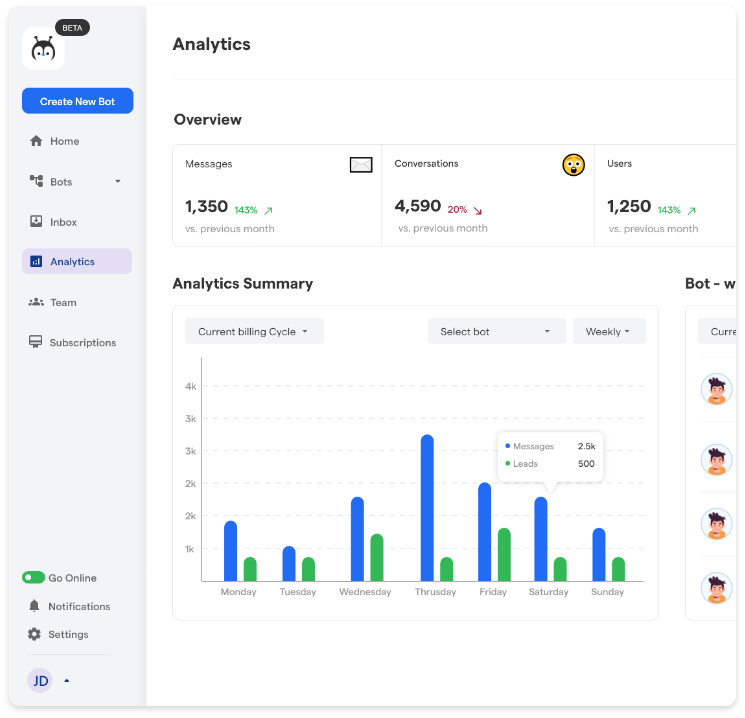
BotPenguin provides detailed analytics and insights into your chatbot's performance. You can track the number of interactions, user satisfaction, response times, and more. These analytics help you evaluate the effectiveness of your chatbot and make data-driven decisions to improve customer support workflows.
With BotPenguin's chatbot integration, you can automate and streamline your customer support processes, enhance customer experiences, and reduce manual effort. Whether a small business or an enterprise, BotPenguin provides the tools and features necessary to transform your customer support with intelligent automation.
Conclusion
As chatbots cement dominance as customers’ preferred engagement method, their capability to maintain contextual, omnichannel experiences will distinguish winning solutions. By 2025, over half of all requests will involve AI automation. Survival necessitates integrating conversational assistants seamlessly across communication touchpoints to meet surging demand.
Especially as customers expect consistent, personalized support across public and private channels, chatbots with robust integration capabilities like BotPenguin will lead this revolution. Its robust API connectors, 60+ direct integrations, and intuitive no-code environment effortlessly fuse AI into existing ecosystems.
Specifically, BotPenguin stands out for enabling omnichannel continuity thanks to inherent cross-platform strengths. Customer histories, profiles, and conversations stay accessible between bots deployed across websites, apps, messaging platforms, and internal software tools. This humanizes engagements through persistent context.
With streamlined integration powering the next generation of automated CX, BotPenguin equips brands to skate to where the puck is heading - not where it’s been. Say goodbye to frustrating consumer journeys, disjointed data, and overloaded human agents. The future is flexible, integrated chatbots personalized to each customer at scale.
Suggested Reading:
Frequently Asked Questions (FAQs)
How do chatbot integrations benefit customer support automation?
Integrating chatbots automates routine tasks, offers 24/7 support, decreases response times, and enhances scalability, ensuring efficient and prompt customer service.
Which platforms can benefit from chatbot integrations for customer support?
Various platforms like websites, messaging apps, social media, and CRMs benefit from chatbot integrations, ensuring consistent support across channels.
How do chatbot integrations enhance customer interactions?
Integrations enable personalized responses, immediate query resolution, and seamless handoffs to live agents, improving overall customer satisfaction and experience.
Can chatbot integrations handle complex customer queries effectively?
Advanced chatbot integrations equipped with AI and NLP capabilities efficiently handle complex queries, providing accurate and context-aware responses to customers.
What are the key features of chatbot integrations for customer support automation?
Features include multichannel support, integrations with databases or CRMs, natural language understanding, and the ability to learn from interactions for better responses.
What CRM systems can be integrated with chatbots for customer support automation?
Chatbots can integrate with popular CRMs like Salesforce, HubSpot, and Zendesk, facilitating seamless data exchange and enhanced customer interactions.


